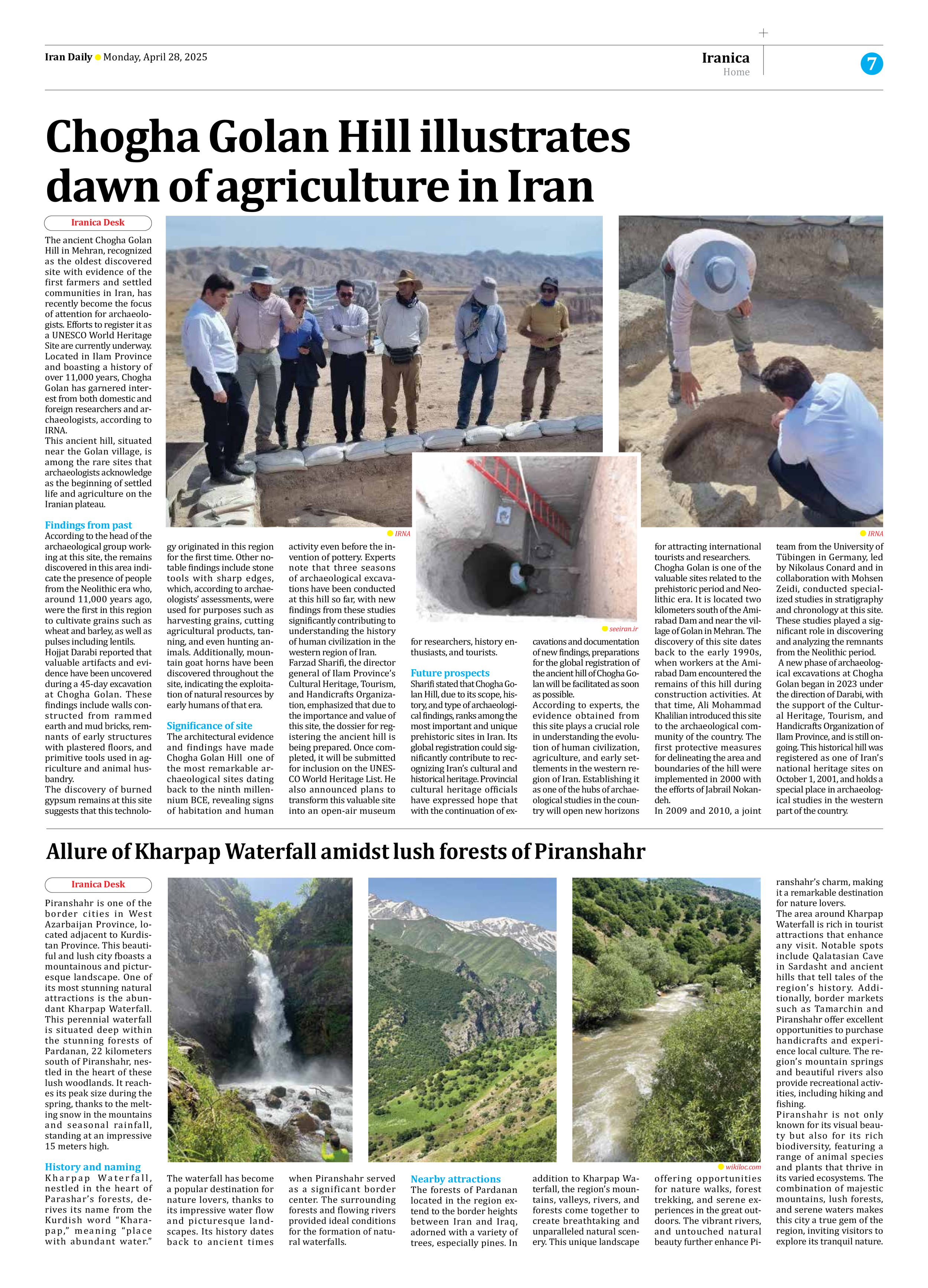
Chogha Golan Hill illustrates dawn of agriculture in Iran
The ancient Chogha Golan Hill in Mehran, recognized as the oldest discovered site with evidence of the first farmers and settled communities in Iran, has recently become the focus of attention for archaeologists. Efforts to register it as a UNESCO World Heritage Site are currently underway.
Located in Ilam Province and boasting a history of over 11,000 years, Chogha Golan has garnered interest from both domestic and foreign researchers and archaeologists, according to IRNA.
This ancient hill, situated near the Golan village, is among the rare sites that archaeologists acknowledge as the beginning of settled life and agriculture on the Iranian plateau.
Findings from past
According to the head of the archaeological group working at this site, the remains discovered in this area indicate the presence of people from the Neolithic era who, around 11,000 years ago, were the first in this region to cultivate grains such as wheat and barley, as well as pulses including lentils.
Hojjat Darabi reported that valuable artifacts and evidence have been uncovered during a 45-day excavation at Chogha Golan. These findings include walls constructed from rammed earth and mud bricks, remnants of early structures with plastered floors, and primitive tools used in agriculture and animal husbandry.
The discovery of burned gypsum remains at this site suggests that this technology originated in this region for the first time. Other notable findings include stone tools with sharp edges, which, according to archaeologists’ assessments, were used for purposes such as harvesting grains, cutting agricultural products, tanning, and even hunting animals. Additionally, mountain goat horns have been discovered throughout the site, indicating the exploitation of natural resources by early humans of that era.
Significance of site
The architectural evidence and findings have made Chogha Golan Hill one of the most remarkable archaeological sites dating back to the ninth millennium BCE, revealing signs of habitation and human activity even before the invention of pottery. Experts note that three seasons of archaeological excavations have been conducted at this hill so far, with new findings from these studies significantly contributing to understanding the history of human civilization in the western region of Iran.
Farzad Sharifi, the director general of Ilam Province’s Cultural Heritage, Tourism, and Handicrafts Organization, emphasized that due to the importance and value of this site, the dossier for registering the ancient hill is being prepared. Once completed, it will be submitted for inclusion on the UNESCO World Heritage List. He also announced plans to transform this valuable site into an open-air museum for researchers, history enthusiasts, and tourists.
Future prospects
Sharifi stated that Chogha Golan Hill, due to its scope, history, and type of archaeological findings, ranks among the most important and unique prehistoric sites in Iran. Its global registration could significantly contribute to recognizing Iran’s cultural and historical heritage. Provincial cultural heritage officials have expressed hope that with the continuation of excavations and documentation of new findings, preparations for the global registration of the ancient hill of Chogha Golan will be facilitated as soon as possible.
According to experts, the evidence obtained from this site plays a crucial role in understanding the evolution of human civilization, agriculture, and early settlements in the western region of Iran. Establishing it as one of the hubs of archaeological studies in the country will open new horizons for attracting international tourists and researchers.
Chogha Golan is one of the valuable sites related to the prehistoric period and Neolithic era. It is located two kilometers south of the Amirabad Dam and near the village of Golan in Mehran. The discovery of this site dates back to the early 1990s, when workers at the Amirabad Dam encountered the remains of this hill during construction activities. At that time, Ali Mohammad Khalilian introduced this site to the archaeological community of the country. The first protective measures for delineating the area and boundaries of the hill were implemented in 2000 with the efforts of Jabrail Nokandeh.
In 2009 and 2010, a joint team from the University of Tübingen in Germany, led by Nikolaus Conard and in collaboration with Mohsen Zeidi, conducted specialized studies in stratigraphy and chronology at this site. These studies played a significant role in discovering and analyzing the remnants from the Neolithic period.
A new phase of archaeological excavations at Chogha Golan began in 2023 under the direction of Darabi, with the support of the Cultural Heritage, Tourism, and Handicrafts Organization of Ilam Province, and is still ongoing. This historical hill was registered as one of Iran’s national heritage sites on October 1, 2001, and holds a special place in archaeological studies in the western part of the country.







